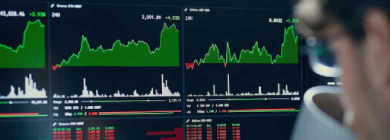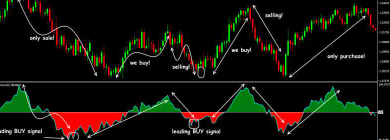A. The behavioral causes
Dalbar Quantitative Analysis of Investors’ behavior (QAIB) consistently shows that individual investors reduce the market. This is mostly because they wait for clear signs or positive pace before investing, often going on with fear of making a mistake or losing benefit. By the time they feel “sure”, the market may already have the cost of growth, leaving some space for more immediate side lap. Research in behavioral finance highlights the impact on this tendency and the results of its investment.
- Veterinarian
- Investors often follow others when they see rising prices, thinking that they are a sign of security. When optimism is the highest, this can lead to a large number of investments near the peaks of the market, the higher the probability of subsequent improvement.
- Prejudice
- People give recent influence inappropriate weight. When a stock or fund is performing well, it looks like a “safe” investment; And people ignore the risk rating. Many anti-risk investors are found to be investing in small-caps after significant walking.
- Fear of loss (risk dislike)
- Investors are hesitant to invest when markets are uncertain or unstable, waiting for signs of stability. Unfortunately, by the time they work, many possibilities of growth can already be realized.
B. Market timing bias
- Markets are naturally unstable, and short -term fluctuations are normal. If you invest in the market peak or when the valuation is high, the reform can follow, which makes it feel like your investment has dropped.
C. Pisces
- Momentum often runs stocks or funds in a short period of time, but average replacement (return to average operation) often kicks in the medium term. Investors chasing velocity can be considered as’ underperformance immediately after investing in this steady common event
D to make a profit by others
- When stocks rise very fast, making profits by investors can stimulate a decline. Institutional investors, for example, often balance the balance portfolio, sell excessive evaluation assets and buy valuable people. And as their portfolio is large, it often leads to a decrease.
How to avoid/ handle this event:
- Invest on the basis of fundamentals
Focus on the inner value of the property rather than a recent exhibition or trends. Evaluate mutual funds or stocks using a matrix such as valuation, earning growth or field view.
- Use systematic investment plans (SIP)
Instead of investing a single amount, SIP allows you to periodically invest, reducing the influence of market volatility.
- Research and diversify
Avoid full dependence on the influence of the past. Also, spread your investments in asset classes, areas and geographicals to reduce the impact of poor time in one field
- Stick to your investment plan
Align investments with your goals and risk tolerance. Avoid responding emotionally on short -term changes.
- Avoid the lure of ‘market time’
It is almost impossible to predict the right time to invest. Instead, focus on staying and staying consistent.
Over time, a disciplined and informed investment will help you advance this short -term “dips” and achieve your financial objectives.
Paraffracing to Jack Bogale, I will take the conclusion by telling investors: ‘instability is your friend, your enemy’s impulse’
(This article is attributed to Sandeep Valuj, Group CMO, Motilal Oswal Financial Services Limited.
(Now you can subscribe to our Etmarkets WhatsApp channel)































